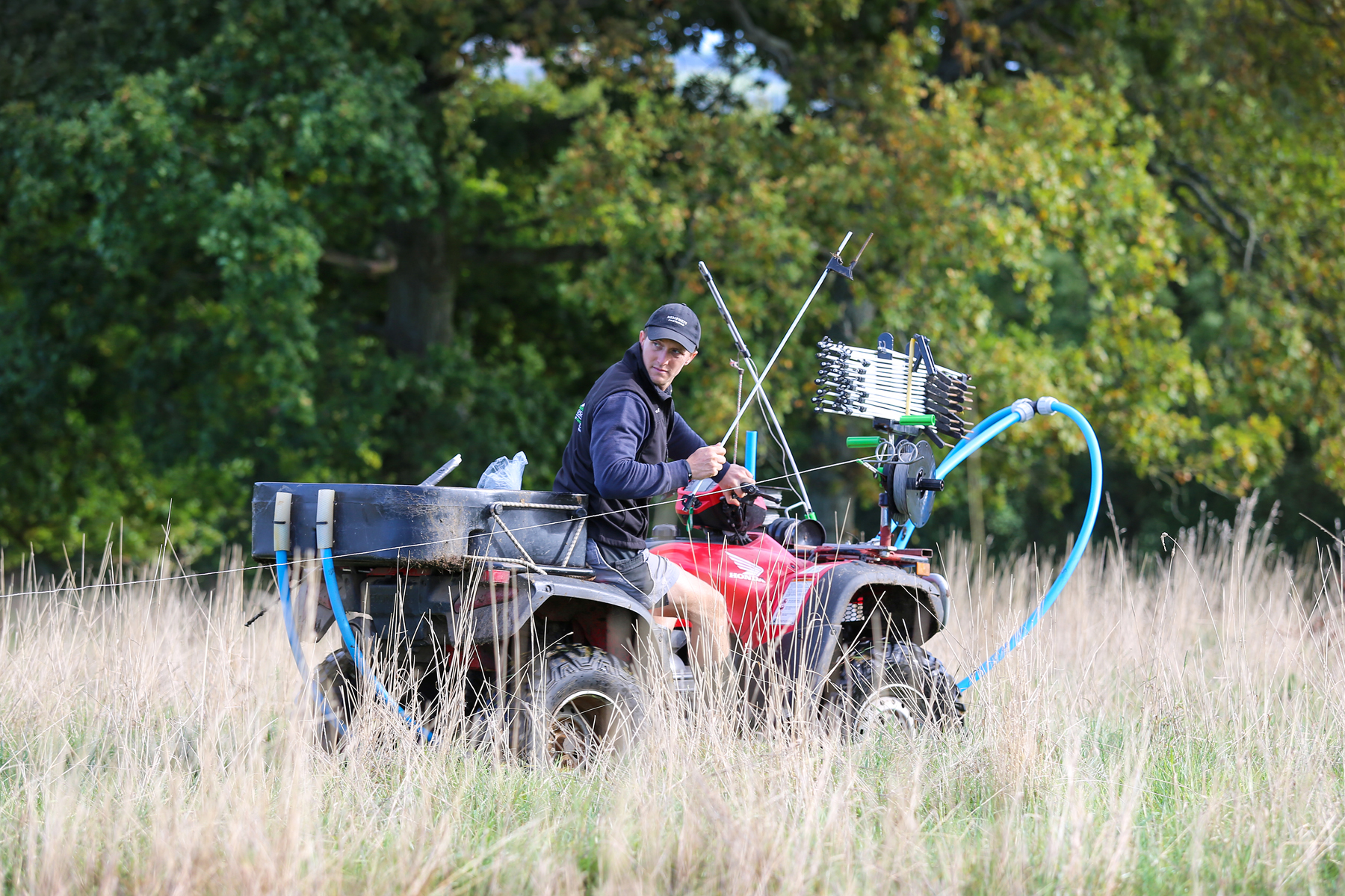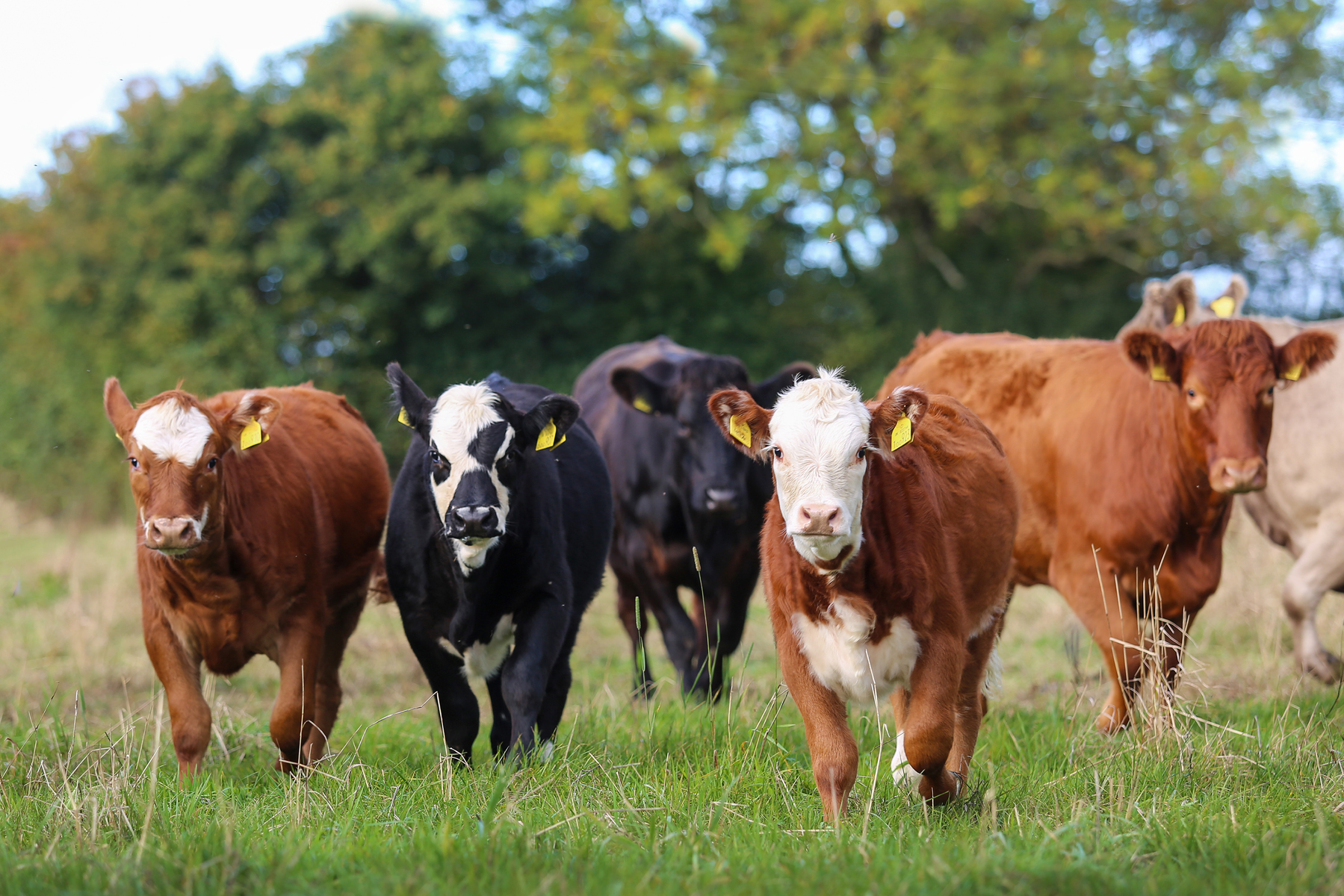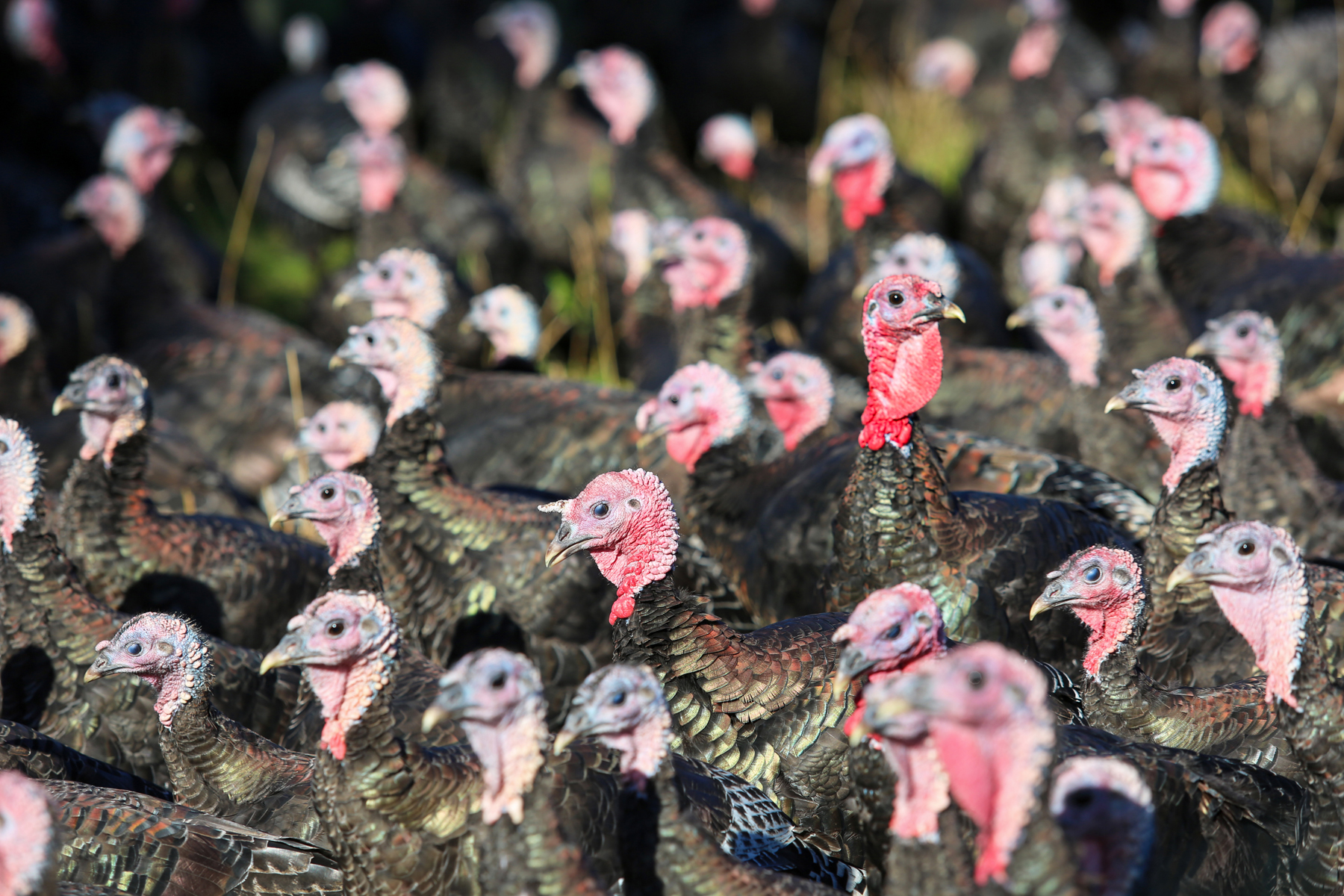
George Ford is working towards running a Black Baldy herd at his Bristol-based farm
A switch to native breeds is fitting a more holistic style of farm management being adopted by Bristol-based beef farmer George Ford.
Running 40 breeding cows, mainly continental-crosses, George, who farms with his wife Meg and parents, Pete and Gill, have moved to use a Hereford sire in the last few years. In a private deal, George purchased Fabb 1 Noak, a bull full of Danish breeding with good EBVs for eye muscle area and intramuscular fat to join his commercial herd.
George’s intention is to cross these first Hereford sired heifers to an Aberdeen-Angus in order to produce Black Baldies.

He explains: “This is partly driven by a desire to keep a more moderate sized cow and also a preference for easier fleshed cattle with good intramuscular fat as we are now starting to retail our own beef.
“We want to avoid anything with myostatin. Large backends aren’t of any interest to us, the prime cuts are in the sirloin and that’s the priority.”
Along with the switch in cattle type, the family has embraced a change in grassland management, initially moving to paddock grazing youngstock, before moving to holistic grazing and mob grazing management style of taller grass.
“We’re heavily focusing on soil health through grazing. Grazing taller grass and allowing for a degree of trampling is helping improve soil quality and helping adapt to farming with lower inputs.
But he admits, it’s required a significant change in mindset.

George says: “It’s a messier way to farm and you have to accept that as part of the change in system. However, grazing taller grass means there is more to trample which helps build soil quality and is meaning we can extend the grazing period at either end of the grazing season.
“Whereas with standard paddock grazing you’re looking at 21-day rotations, with holistic grazing it can be anything from 30 days to 100 days before cattle are back round on the same ground again,” explains George.
“The aim is to rely less on ryegrass and increase the diversity of species in the sward, it is amazing once you stop using artificial fertiliser what other plant species come through. It does mean that some weeds also thrive more, including docks and while they are unsightly, we are coming to terms with the fact that they are doing some good in fixing phosphorus in the soil.
On a practical note, he says the shift in grazing system is allowing cattle to be grazed both earlier and later in the year, with the housing period now cut down to December to the end of March.
“It’s getting shorter each year, with cows housed on cubicles and calves able to creep forward to a straw yard and weaned in January, ahead of cows calving again in April and May.
“The change in breeding is targeting a lower cow weight, with cows which thrive in a forage-based system and get in-calf every year with minimal intervention and largely goes unnoticed in the herd. Those ‘ghost’ cows which never cause any problems and deliver every year are the ones which leave a profit,” says George.
The aim is to have the herd made up of 100 per cent home-bred, native breed cattle within 10 years to help simplify management.
“It is easier to boost profits by reducing costs than increasing outputs,” he says.

And in-line with this simpler approach to herd management, George is extending this to the beef sales, choosing to freeze most of the carcass once cut and retail it a little at a time.
“We’re growing beef sales gradually, but I am conscious that we don’t want to move to all-year round calving, so freezing beef when cattle are ready for slaughter means we can maintain supply through the months when we don’t have any ready.
“Those animals we’re not retailing are sold to ABP, with the aim being an R3 carcass with a maximum carcass weight of 400kg for the steers,” he adds.
“Additionally, we farm 550 turkeys and 1,200 pasture-reared chickens, and the turkeys are big fans of the docks, stripping the seeds from the plant,” he says.

The freezing option is something George believes could be extended to the turkey enterprise, particularly with the threat of bird flu increasing later in the year.
“It would also help with spreading the workload and labour availability.”
It is this poultry enterprise and particularly the turkeys which have given George the confidence to start shifting the beef enterprise towards one which delivers higher eating quality.
He says: “Ultimately, we’re looking to retail more of our own meat, both through pop-up events and also by working with local restaurants and through online sales.
“We started with turkeys five years ago and have introduced the chickens off the back of that and now see an opportunity to expand that with the beef too,” adds George.
The family are working with local butcher Jamie Vowes who cuts the beef to their requirements, with George saying he’s learning a lot about the different cuts as he gets more involved with the retail aspect of the industry.
“We have historically been finishing 4,000 pigs each year, but have recently ceased with that and hope to expand the meat sales side of the business to replace that lost income.
“I firmly believe eating quality will be paramount to that and native breeds, such as Hereford, reared on a forage diet are the best way to deliver the type of beef that can earn a premium through direct selling.”
Away from the livestock enterprises George is also introducing other new ventures to the farm, with planning permission recently granted for subterranean glamping pods, with work on those due to start in 2023 and George is also looking at offering farm safaris in the summer months to capitalize both on glamping visitors and the farm’s proximity to Bristol.
“These are both diversifications which will complement the farming system we’re moving towards and add value to the farm’s outputs by raising awareness of our meat sales.”
Farm facts:
40 breeding cows
Working towards a Black Baldy herd
550 turkeys
1,200 pasture-reared chickens
Planning permission for subterranean glamping pods